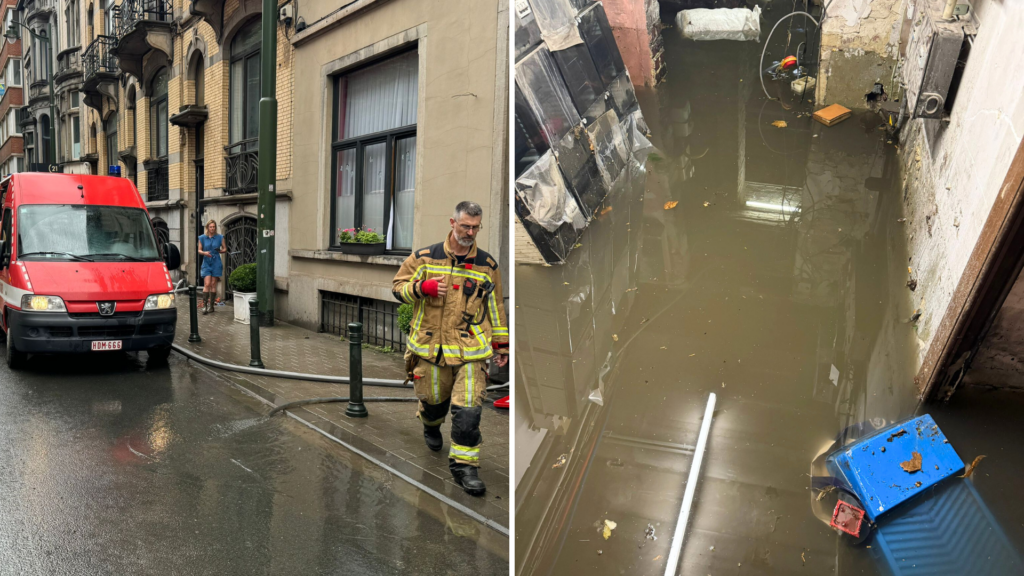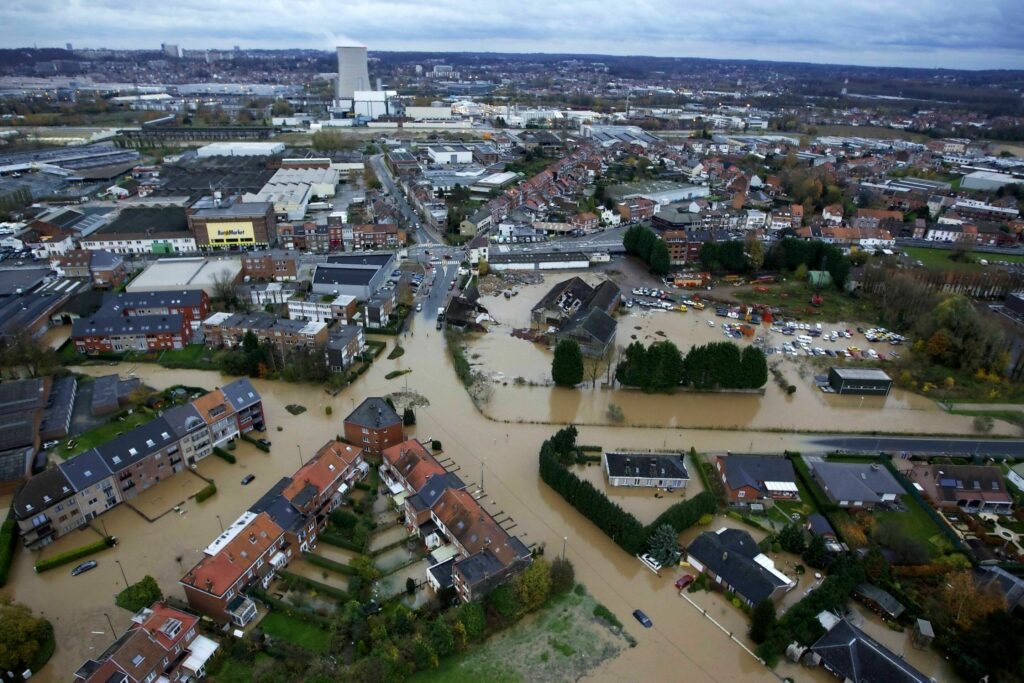As floods are one of the main natural risks for the Brussels-Capital Region, the safe.brussels agency drew up a Special Flood Emergency and Intervention Plan (BNIP Flood).
Heavy thunderstorms and heavy rainfall very often cause a great deal of damage and inconvenience in the Brussels municipalities, namely flooded streets, saturated sewage systems and flooded basements. During prolonged rainfall, watercourses can also burst their banks.
"Rain cannot be stopped. But if authorities, institutions, associations, companies and private individuals join forces, we can try to prevent or limit flood damage," said Sophie Lavaux, governor for crisis management in the Brussels-Capital Region.
The emergency plan she approved on Tuesday is the result of a successful and constructive collaboration between safe.brussels, Brussels Environment, Brussels water operators and the emergency and intervention services, such as the Brussels fire brigade and police.
Four extreme scenarios
The Flood BNIP brings together all the information on hydrography, water infrastructure, competent actors and available resources in the Brussels-Capital Region. It also describes four risk scenarios as well as the expected impact of each scenario:
- Extreme backflow from sewers into basements and on the surface onto roads (return period of 100 years)
- Extreme water discharge via roads ("flashflood")
- High water levels of watercourses bursting their banks
- Obstruction of central Zenne canal
The plan also includes an overview of actions and measures that can be taken by water operators and crisis management actors in the event of a (probable) flood. Communication and information to the population, as well as helping citizens to take the right actions, are also crucial.
In 2023, the Brussels Water Management Plan 2022-2027 (WBP) was already approved and published by Brussels Environment – aiming to make the region more resilient and providing for a number of crucial government measures to combat floods and minimise the damage they cause.

Floods in a Brussels building. Credit: Brussels Fire Brigade
Within the current risk cycle, the Flood BNIP complements prevention and ensures that Brussels is prepared should there be a large-scale flood in the region. Specifically, it is now the main reference framework in case of major floods requiring management at regional level.
"The complexity of managing floods in an urban environment requires a specific emergency plan. That plan, drawn up by safe.brussels and including several essential pillars, is essential to strengthening our resilience to climate risks," said Barbara Dewulf, deputy director-general of Brussels Environment.
"It takes into account the unprecedented events that occurred recently in Wallonia and emphasises the measures that must be taken in advance to limit the impact of possible flooding, as well as the actions that must be taken afterwards to ensure a quick restart of the city's essential functions," she added.
Sharing information
The process of creating this BNIP and its future operationalisation is at least as important as the plan itself as these processes raise awareness around flood risk, safe.brussels stressed. A lot of information and knowledge was gathered about flood risk for the Brussels-Capital Region, which will now be further shared with other actors.
In 2025, the plan will be further rolled out at the level of emergency and intervention services, municipalities and other actors. Those partners will in turn prepare or adapt plans or procedures to integrate and anticipate flood risk. The adoption of this BNIP is therefore certainly not an end point, the authors clarified.

